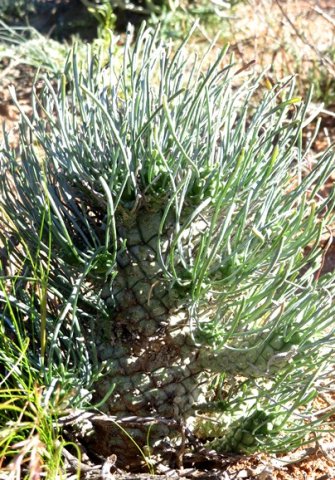Tylecodon wallichii subsp. ecklonianus stem tubercles

The very thin, long leaves of Tylecodon wallichii subsp. ecklonianus are present only upon the new growth. Foliage appears in the growing season, not only at the top of the thick stem but also on each smaller branch that has grown from it. Flowering comes only in summer.
Where the leaves did not grow this year, the neatly arranged diagonal rows of stem tubercles are clear to see. These are dull green bulging skin surface areas surrounded by dark, sunken seams and centred by short spiny or stalk-like protuberances called phyllopodia. A phyllopodium is a retained leaf base that has lost its withered upper part, in this case a very long part.
The plant is sometimes commonly called the pegleg buttertree on account of its phyllopodia. The buttertree name comes from the “real” buttertree, T. paniculatus. Northern pegleg buttertree means subsp. ecklonianus, the one occurring only in Namaqualand and to the north (Frandsen, 2017; iNaturalist).

